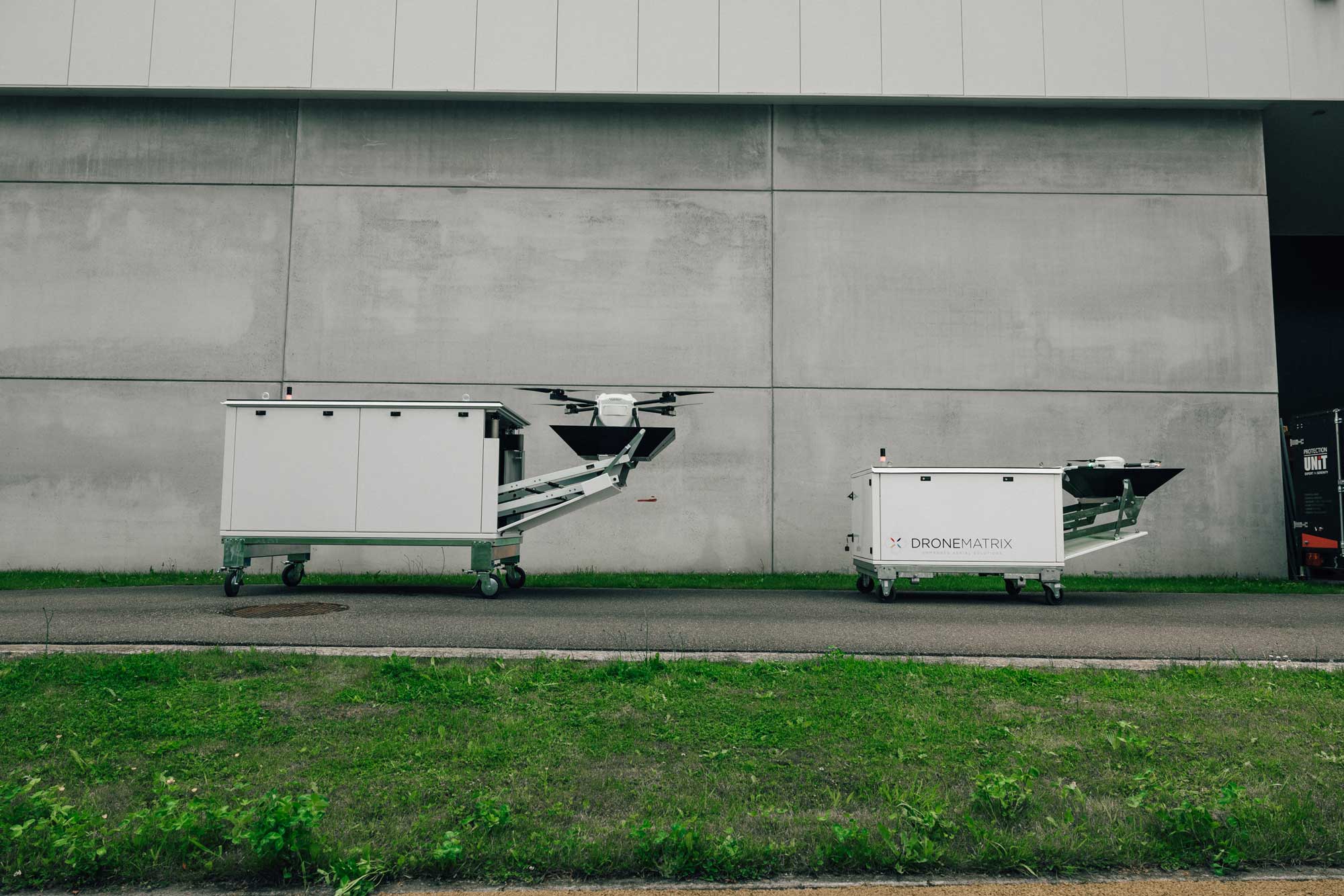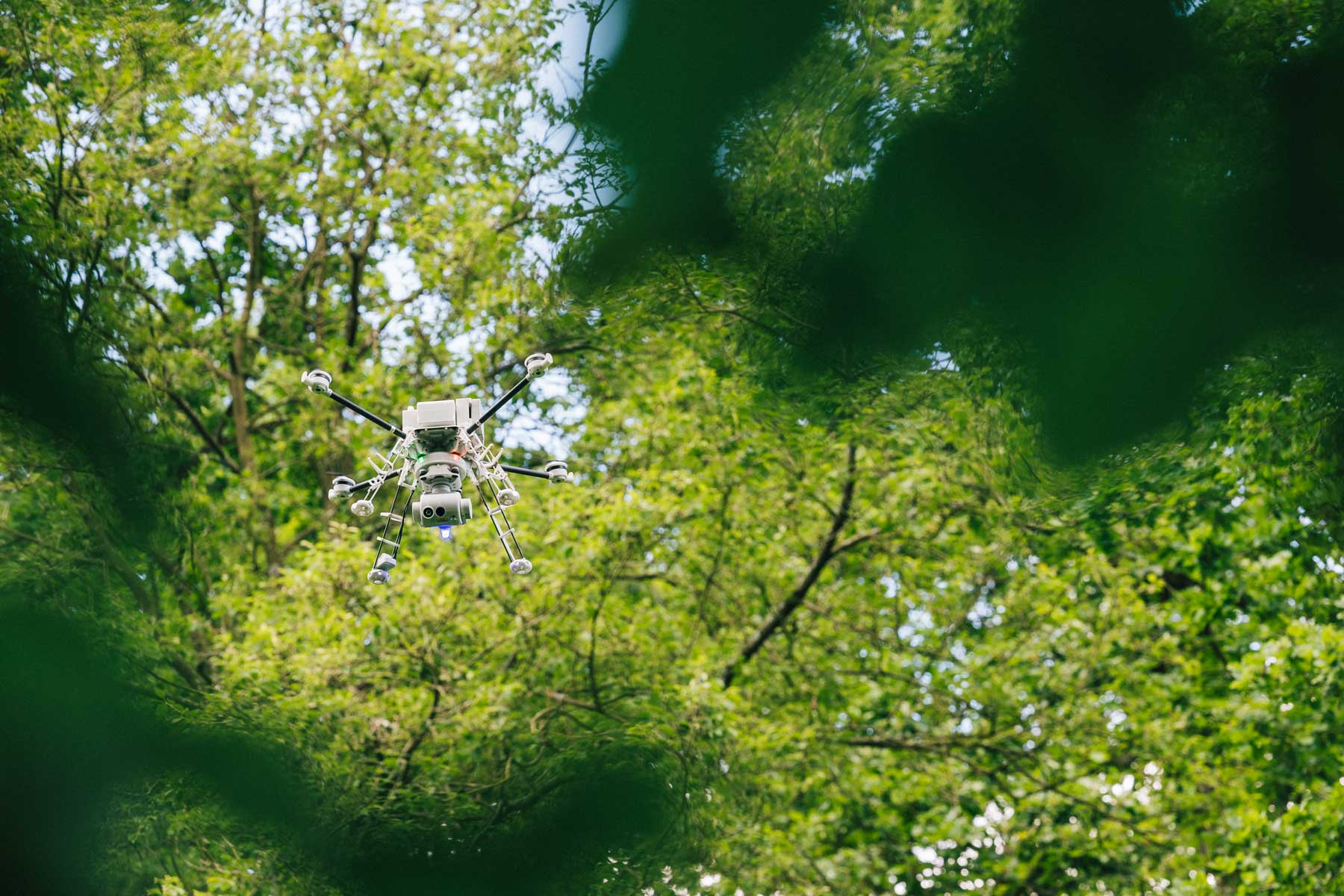AR100-H
The AR100-H has been engineered through a long-term relationship with end-users to feature an operational user interface.
The AR100-H is the latest development of the AR100 quadcopter series, building on over a decade of experience supplying drone systems to the German Army. Since 2005, the AR100 series has been successfully deployed worldwide in the most challenging environmental conditions, proving its reliability and effectiveness.
Ideal for ISR, search and rescue, tactical missions, and more, the AR100-H delivers unmatched performance in various operational scenarios.
Equipped with a unique thermal overlay, the AR100-H makes identifying and tracking targets with pre-set temperature ranges easier, improving search and rescue operations.
Unique Features and Benefits:
- Rapid Deployment: Ready for flight in under 2 minutes
- Portability: Light-weight and backpack-portable, providing unmatched mobility
- Modular Design: Quick, in-field replacement of major components without tools and while using gloves.
- Built for Extreme Conditions: Certified for operation in extreme temperatures, from -19 to +49 degrees Celsius,
- Secure Communications: Features AES-256 encrypted communication.
- User-Friendly: Extremely stable and easy to use, requiring minimal training, allowing operators to focus on the mission rather than the equipment.
- Life-Saving Capabilities: Designed to save lives by providing critical reconnaissance in dangerous environments, the AR100-H has been instrumental in enhancing the safety and effectiveness of military operations.
The AR100-H - engineered for excellence, wherever your mission takes you. Experience the future of UAV technology today.
Modules
Modules
Docking station: YEDO
This is an air-conditioned environment that protects the drone from meteorological conditions and other environmental factors. The ground station is used to exchange data, perform wireless charging and to house the drone in stand-by-mode for the next mission. The ground station also serves as the base station for communication with the YEDO. The ground station has an extendible funnel as shown in the following picture, from this funnel the drone will take off and land. This funnel has a special shape and a location beacon that together ensure that the drone lands autonomously in the correct orientation.

The communication module of the AR-100H is designed for exceptional flexibility and user convenience. Its modular design lets users quickly replace the module in case of defects, ensuring continuous operation with minimal downtime. If a frequency is occupied, the communication module can be easily swapped out for another, maintaining reliable and secure communication channels.
Moreover, the modularity of the communication module simplifies and accelerates the integration of new technological advancements, keeping the system up-to-date with the latest developments. AirRobot’s expertise in both software and hardware integration guarantees seamless performance and reliability, making the communication module a vital component of the AR-100H’s robust and adaptable UAV system.
AirRobot combines advanced software and hardware integration to create a robust and versatile drone system. The AR-100H airframe features a streamlined design that ensures simplicity and ease of use, making it ideal for rapid deployment and various mission types. Its modular architecture enables quick field repairs and seamless upgrades, ensuring continued operational readiness.
The AR100-H Smart Flight Battery Charger Duo is controlled by an intuitive one-button operating principle. The user is guided through a structured, simple menu. The large, illuminated display is easy to read, even outdoors.
At 100W charging power, the typical charging time for a AR100-H Smart Flight Battery is approximately 2.5 hours. The charger can be operated stationary (at 110/230V) or in the field using the car-plug charger (at 12-36V).
Both the charging power (25W, 50W or 100W) and the target state of charge (30%, 70% or 100%) can be set independently for both charging units. Reducing the charging power enables the use of sources with limited energy such as fuel cells, solar panels or a car battery with low power.
The system features four payload interfaces that are available for any future integration of additional sensors.
The LIDAR module is used to determine the height above the ground and to hold the platform. The module works close to the ground up to a height of height of approx. 3m. It is attached to the rear option module slot of the superstructure and mounted without tools.
The navigation module of the AR-100H is designed with user-friendly modularity, allowing for quick and easy replacement in case of defects. This flexibility ensures minimal downtime and maximised operational efficiency. Additionally, the modular design simplifies and accelerates the integration of new technological advancements, keeping the system up-to-date with the latest developments.
AirRobot’s expertise in software and hardware integration ensures seamless performance and reliability, making the navigation module a critical component of the AR-100H’s overall functionality.
In addition to the ground control station (GCS), the Remote Viewer enables displaying live video and metadata without direct connection to the GCS or the drone.
Any conventional computing device (laptops, tablets, etc.) equipped with an Ethernet interface can display the live video stream. The Remote Viewer’s modular design enables operation with the family of AR100-H radio modules.
The Remote Viewer uses the common battery with the family of AR100-H products, including the GCS HD and Smart Flight batteries. A common battery approach reduces the logistics footprint and user burden by simplifying in-field operation and usability.
In addition, the system components are weatherproof and compatible with operations using gloves.
The AR100-H smart flight battery employs the latest lithium-ion battery technology and can operate in temperature ranges from -20°C to +65°C with minimal loss of capacity.
The intuitive one-button operating principle activates and controls the battery display and status system. This display reports critical battery information, including state of health, state of charge, date of manufacture, last cell change, number of charging cycles, current cell temperature, PCB temperature, individual cell voltages, and total (overall) voltage.
One of the more significant advancements in the AR100-H development is the implementation of a modular system. This enables quick, in-field replacement of major components and spare parts like motorarm or landing gear, without tools and while using gloves.
The AR100-H’s light-weight carrying system is optimized for handling and load distribution. It provides space for one flight system, six smart flight batteries, the control unit GCS HD (with antennas), and antenna extensions.
The carrying system can also be easily accommodated in vehicles and is based on a Modular Light-weight Load carrying Equipment (MOLLE) system, including a Pouch Attachment Ladder System (PALS).
The carrying system is easily extendible using the proven Mystery Ranch® NICE Frame. It also has additional storage space and an integrated rain cover.
The carrying system, supporting deployments, typically consists of the following:
- AR100-H UAV
- MikroGimbal
- Six smart Flight Batteries
- GCS HD with carrying strap and antennas
- Modular GCS HD rain cover with sun shield
- 2m antenna extensions (optional)
Life cycle Support
The Drone you bought yesterday will feel newer tomorrow.
We update our fleets and provide scheduled maintenance programs to ensure our drones are at the leading edge of technological advancements.
Maintenance training
We can train clients to become certified AirRobot technicians.
Upgrade support
We can provide the means to upgrade your fleet to the latest version as models evolve.




















